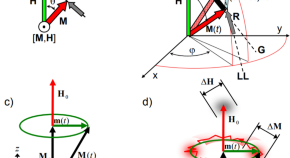Photocurrent EDMR Measurement and Carrier Behavior of TIPS-Pentacene Under FET Device Operation
Authors (first, second and last of 5)

Collection
Prof. Gareth R. Eaton, A.B. Harvard and Ph.D. MIT, has been in the Department of Chemistry and Biochemistry at the University of Denver since 1972. He has served as Dean of Natural Sciences and as Vice Provost for Research. The Eaton research program involves continuous wave, rapid-scan, and pulse EPR applied to the study of relaxation times, spin-spin interaction, metal ions in biological systems, and EPR imaging. Gareth and Sandra have co-authored more than 400 papers and book chapters. They jointly received the Bruker prize and are Fellows of the International EPR/ESR Society. Gareth is a Fellow of the Royal Society of Chemistry.
Prof. Sandra S. Eaton, B.S. Wellesley College and Ph.D. MIT, taught at University of Colorado Denver from 1973 to 1989. She moved to University of Denver in 1989. She has been Chair of the Department. The Eaton research program involves continuous wave, rapid-scan, and pulse EPR applied to the study of relaxation times, spin-spin interaction, metal ions in biological systems, and EPR imaging. Sandra and Gareth have jointly authored more than 400 papers and book chapters. They jointly received the Bruker prize and are Fellows of the International EPR/ESR Society.
Prof. Kev M. Salikhov graduated from the Kazan State University in 1959. Since 1988 he works at the Zavoisky Physical-Technical Institute (Kazan) as Director (1988-2015) and as Institute’s Scientific Advisor (2015 - until present). Kev Salikhov did outstanding contribution to the theory of pulse EPR spectroscopy and its applications, to theoretical foundations of spin chemistry and developed new paradigm of bimolecular spin exchange in dilute solutions of paramagnetic species. He is founder and Editor-in-Chief of Applied Magnetic Resonance, Lenin Prize Winner, Fellow and Gold Awardee of the International EPR/ESR society and Fellow of ISMAR.



























